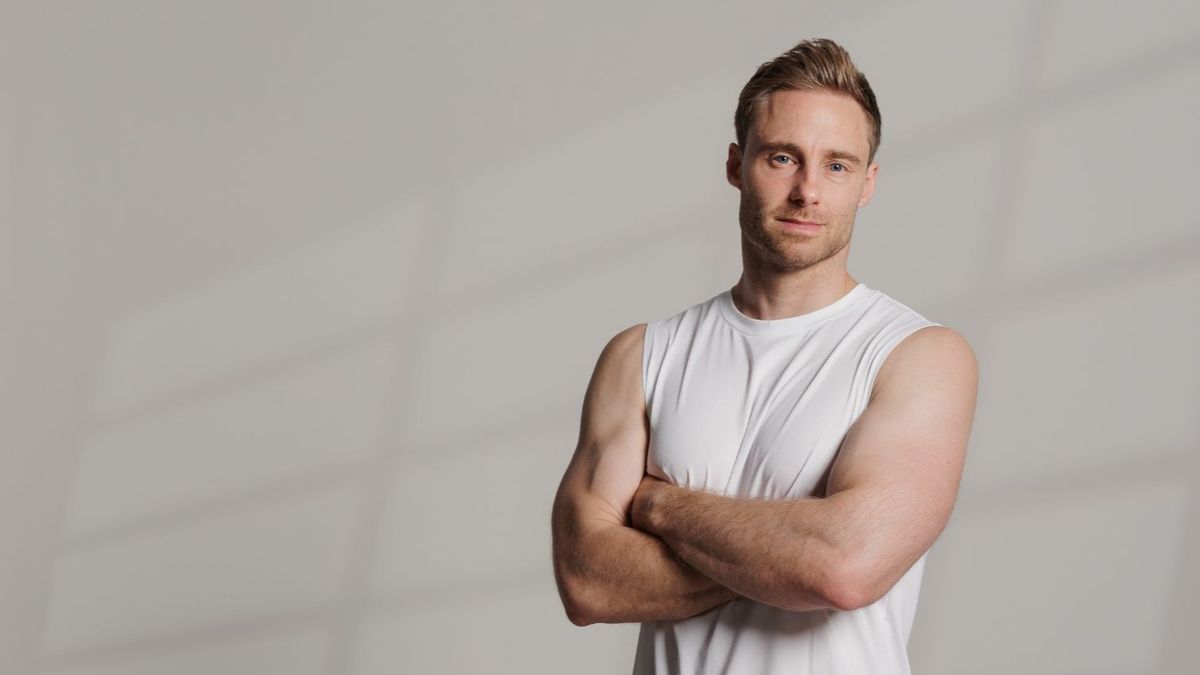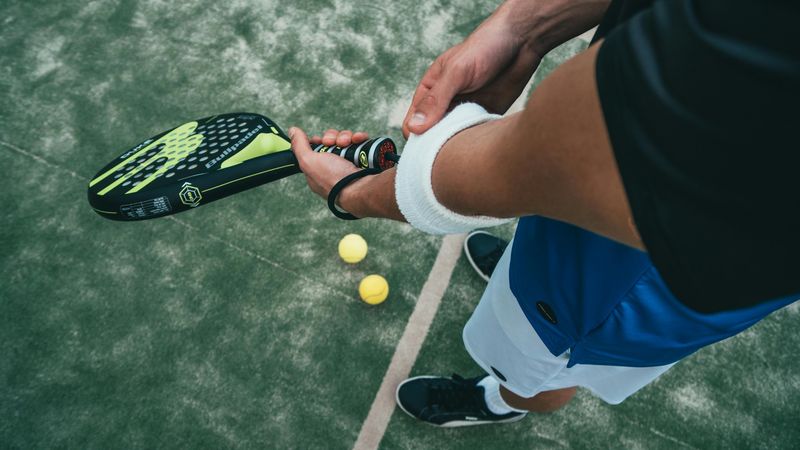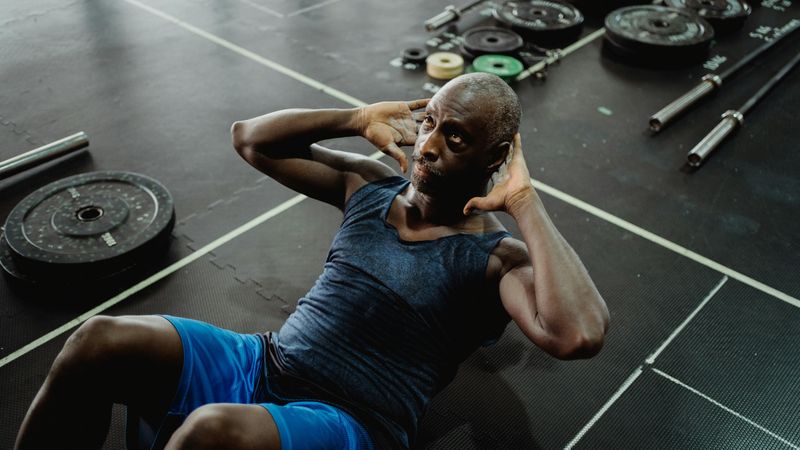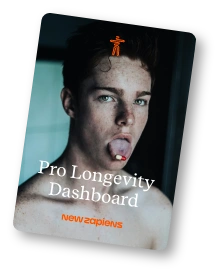Longevity for Pragmatists – Living Well for the Long Haul Without Dogma

Personal trainer and all-round athlete Coach Zimo is not only concerned with helping you achieve a lean and defined body, but also with keeping you fit, vital, and capable well into old age. In this guest article, he explains how he takes a pragmatic approach to longevity with his clients.
There are two types of people. Some treat their body like a utility vehicle they can simply swap out for a new one in two years. They wash it regularly, but they don’t make sure that this “vehicle” (their body) stays in shape over the long term.
By their early 30s, this starts to show. Weight creeps up, the first aches and pains appear. They tell themselves, “Well, I’m not 20 anymore,” as an excuse to change nothing.
On the other side are the health-conscious, the self-optimizers, the biohackers. People who try to get the most out of their body, not by running it into the ground, but to stay healthy and in top form for as long as possible.
They get regular medical checkups, even at their own expense, and spend large sums on the latest biohacking gadgets. Taken to the extreme, this lifestyle is exemplified by Bryan Johnson, known from the Netflix documentary Don’t Die: The Man Who Wants to Live Forever.
As a coach, I prefer the second type. But few people have the time or money to align every second of their life around staying young. Anyone looking for a stable relationship and kids will find it even harder to find a partner who will go along with such a plan.
So strictly following a “longevity blueprint” is anything but practical.
A Longevity Blueprint for Pragmatists
Fortunately, there’s a more pragmatic way. By applying the Pareto principle, we can achieve significant benefits for our health with relatively little effort.
I like to focus on the basics. Before spending money on supplements or high-tech devices, your daily lifestyle and nutrition need to be in place. For example, one study found a link between grip strength and longer life. That doesn’t mean you should only train your grip to live longer.
If that were true, men would live much longer than women. We know that’s not the case. But men and women with stronger grip strength do live longer than those with weaker grip strength.
That’s because an active lifestyle builds grip strength. It doesn’t matter whether it’s at the gym, gardening, or hands-on hobbies. They all ensure you move regularly and do something for your body.
Training in general has a uniquely positive effect on longevity. Done right, it can keep you stronger, fitter, and more mobile well into old age.

The Benefits of Strength Training
Regular, well-structured strength training combined with adequate protein builds muscle. It counters age-related muscle loss, which begins around 30 and accelerates over time.
Loss of muscle mass (sarcopenia) leads to strength decline, noticeable when climbing stairs, carrying groceries, or rising from low seats. Mobility decreases, and balance worsens over time.
Too little loading also reduces bone density. Women in particular face higher risk of osteoporosis. With reduced balance, falls more often lead to fractures, further limiting mobility.
It becomes a vicious cycle. On top of that, the risks of metabolic disease, obesity, and type 2 diabetes increase, and the immune system weakens. Studies show sarcopenia is linked to higher overall mortality.
You can counter all of this with regular strength training. Your goal doesn’t have to be building bodybuilder-level muscle. Training your whole body three times a week for about an hour is enough to keep muscles active and gradually build them.

The Benefits of Endurance Training
The second key factor is endurance training. Its calorie-burning effect is almost the least important aspect.
More crucial is the impact on long-term health. Regular endurance training—whether running, swimming, or cycling—improves your cardiovascular system. You strengthen your heart and blood vessels, lowering the risk of heart attack, stroke, and high blood pressure.
It improves circulation in body and brain, lowers resting heart rate, has anti-inflammatory effects, promotes new mitochondria, helps manage stress, and improves sleep quality.
All you need are running shoes, a bike, or swimwear. I recommend two to three sessions per week for optimal results. You can also combine endurance with strength by adding 30 minutes of cycling at the end of a workout, which directly supports recovery.
Endurance training doesn’t just extend lifespan, it helps you stay healthier longer.
The Benefits of Hybrid Training
If you’re short on time but still want the benefits of both strength and endurance, HIIT is the right choice. You work with lighter weights and higher reps, focusing more on strength endurance.
It’s more intense, which can be a challenge for beginners, but it saves time while building muscle, burning fat, and improving cardiovascular fitness.

The Benefits of Mobility Training
The third pillar of longevity training is mobility. I’m glad it has gained more attention in recent years. Fifteen years ago, I often had to justify working on flexibility before, during, or after workouts.
Mobility training keeps you moving freely into old age. It ensures joints use their full range of motion while maintaining muscular control. Combining mobility work with strength exercises is especially effective.
My tip: better five minutes daily than a full hour every two weeks. Within days you’ll feel more comfortable in your body and experience fewer tensions.
You’ve probably noticed older people often move stiffly, with locked joints. Mobility work “oils and polishes” your joints, keeping muscles, tendons, and ligaments flexible and resilient. That means higher quality of life in later years.
Bonus Tip
Watch how children move compared to adults and you’ll see a huge difference. Kids run, jump, crawl, roll, climb, and tumble. Adults mostly perform controlled movements.
To not only stay strong, mobile, and enduring, but also keep youthful agility, include these patterns in your training.
Crawl across the floor, jump on a trampoline, roll on the grass with your kids until you’re dizzy, do cartwheels, climb again. If you don’t want to try these in public or at the gym, join a wrestling, judo, or grappling club where these movements are a normal part of warm-ups.
Conclusion
There are many things you can do for longevity. But an active lifestyle and healthy nutrition form the foundation. With a mix of strength, endurance, and mobility training, and openness to re-learning new and old movement patterns, you can stay healthy and independent into old age, without fearing decline already starting in your 30s.
References
Author: Dominic Zimmermann
After completing his sports studies at the German Sport University Cologne, Zimo worked as a personal trainer and in various online editorial teams of well-known food and fitness startups, as well as a lecturer for the German Sports Academy. With his online magazine & podcast Allround Athletics, Zimo inspires and motivates people to do more for their physical and mental health.




